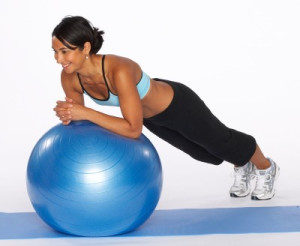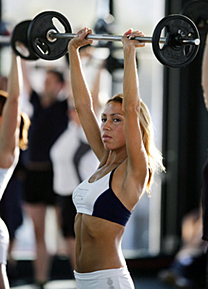Are you struggling to plan your daily exercise routine? Or just struggling to find a suitable point to start from? For many people, assessing the ‘big four’ before exercising can be the key to their success. Those who halt their exercise routine prematurely or experience very little in terms of results are often those who dismiss the power of these four factors.
 The first of the ‘big four’ is time, how long are you going to spend exercising? This is a logical place to begin, especially if it has been a while since you last exercised. Many will over estimate in this area, thinking that they are going to run a marathon in their first session.
The first of the ‘big four’ is time, how long are you going to spend exercising? This is a logical place to begin, especially if it has been a while since you last exercised. Many will over estimate in this area, thinking that they are going to run a marathon in their first session.
It is better to underestimate, if you think you could possibly exercise for 45 minutes then why not just plan for 30 minutes? This way it is more likely you will meet your session goals on time.
The idea of setting aside 30 minutes was just an example, everyone will have different needs and different time constraints, a decent plan however eliminates the potential for setbacks. Think about how much time you want to spend exercising and stick to it. If doesn’t matter if you will have more time on certain days, just take it day by day and we will come to the whole routine further on in the article.
Now you have decided how much time you can afford to spend exercising it is a matter of choosing the type of exercise you wish to part- take in. There are two basic forms of exercise, cardiovascular exercise and muscle endurance exercise. You need to determine which avenue you wish to go down. Cardiovascular exercise focuses more on the strengthening of your heart as well as any working muscles. Forms of exercise which are prone to making you out of breath are generally cardiovascular exercises.
Running, cycling, swimming, boxing and even walking, are all popular cardiovascular exercises. Yes, these forms of exercise do work your body’s muscles, boxing is particularly tough on the biceps and triceps. This said however, forms of exercise in this categories are designed to improve your heart’s performance, encouraging your body to keep exercising at a consistent intensity for a lengthy period of time.
Muscle endurance exercise as you would expect is designed to target specific muscle groups. By targeting these muscles the exercises aim to improve the strength, size and performance. Examples of muscle endurance exercises include, bicep curls, lateral rises and chest presses. The majority involve the use of some form of equipment, be this a weight resistance machine, dumbbells or a barbell.
The list of muscle endurance exercises is endless, there are a variety for each muscle group and it is necessary to include a mixture if you do choose muscle endurance exercise over cardiovascular exercise but make sure you have access to all the necessary equipment before you start.
Next you must look at intensity, this is the third of the four factors you should consider before exercising and it is not to be dismissed.
Many of you may be questioning what is intensity? And how do I select it. The intensity of your exercise dictates how hard you are asking your body to work, the principle varies slightly when applying it to the two different types of exercise. In terms of cardiovascular exercise the intensity dictates how fast you aim to run, walk, swim, cycle etc, how many miles, yards or meters you wish to cover and the time you wish to complete the exercise is. By analysing all this information prior to your cardiovascular exercise session you are likely to have selected an intensity level. of the ‘big four’.
Beginners should start at a low intensity, get to grips with your selected exercise before you start to make any performance based progress. Once you have found your feet you can then look to steadily increase the intensity. Those with a little more experience may wish to start at a higher intensity, however it is still not advised to start with anything too vigorous.

For weight resistance training intensity is slightly different. The weight you select to lift, the number of repetitions you choose and the number of sets you choose dictate the intensity. For those unfamiliar with the concept, a rep is a single repetition of an exercise, for example one bicep curl. A set on the other hand is a collective term for a selection of reps. For example, you could choose to do 12 reps as a set and then four sets, this would be 48 reps in total.
So you know how much you want to spend exercising, you know the type of exercise you want to part- take in and you now know at what intensity you wish to work out, your final step is to decide how often you wish to exercise. Is this to be a one of event? Or possibly a weekly occurrence?
Either way it is vital you know if this is to be your only exercise session of the week or one of many. Some may argue that you may not know this information until you have completed the first session. If this is the case then make sure you decide this sooner or later, frequency can have a massive impact on exercise intensity and type of exercise.
Remember, consider the big four before you throw yourself head first into the world of regular exercise.
